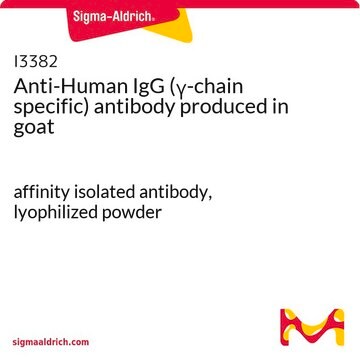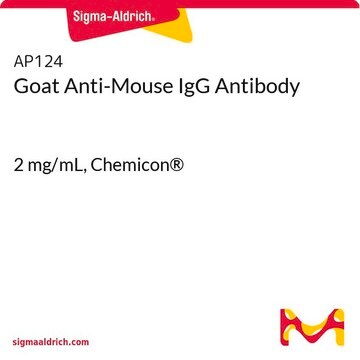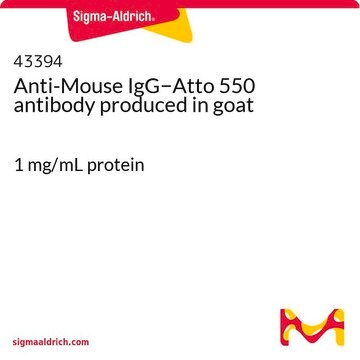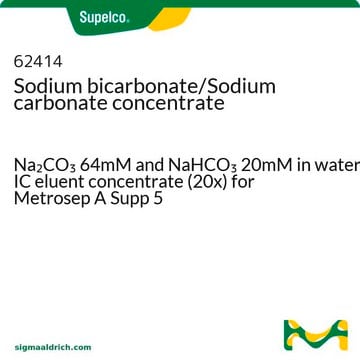78102
Anti-Mouse IgG - Atto 633 antibody produced in goat
~1 mg/mL IgG, affinity isolated antibody
Synonyme(s) :
Anti-Mouse IgG−Atto 633 antibody produced in goat, Atto 633 [goat-Anti-mouse IgG]
About This Item
Produits recommandés
Source biologique
goat
Conjugué
Atto 633 conjugate
Forme d'anticorps
affinity isolated antibody
Type de produit anticorps
secondary antibodies
Clone
polyclonal
Contient
50% glycerol as stabilizer
Espèces réactives
mouse
Concentration
~1 mg/mL IgG
Fluorescence
λex 636 nm; λem 650 nm in PBS
Température de stockage
−20°C
Modification post-traductionnelle de la cible
unmodified
Catégories apparentées
Description générale
Anti-mouse IgG (whole molecule) is purified from goat anti-mouse IgG antiserum to remove essentially all goat serum proteins, including immunoglobulins, which do not specifically bind to mouse IgG. The antibody preparation is solid phase adsorbed with human serum proteins to ensure minimal cross reactivity. Goat anti-mouse is conjugated to Atto 633 NHS and purified by gel permeation chromatography and dialysis to remove unbound dye. Atto 633-goat anti mouse IgG associates with mouse IgGs.
Immunogène
Application
Forme physique
Remarque sur l'analyse
Informations légales
Clause de non-responsabilité
Not finding the right product?
Try our Outil de sélection de produits.
Mentions de danger
Conseils de prudence
Classification des risques
Aquatic Chronic 3
Code de la classe de stockage
10 - Combustible liquids
Classe de danger pour l'eau (WGK)
WGK 1
Point d'éclair (°F)
Not applicable
Point d'éclair (°C)
Not applicable
Équipement de protection individuelle
Eyeshields, Gloves
Certificats d'analyse (COA)
Recherchez un Certificats d'analyse (COA) en saisissant le numéro de lot du produit. Les numéros de lot figurent sur l'étiquette du produit après les mots "Lot" ou "Batch".
Déjà en possession de ce produit ?
Retrouvez la documentation relative aux produits que vous avez récemment achetés dans la Bibliothèque de documents.
Articles
Immunoblotting (Western blot transfer) is a common technique in modern proteomics research.
Notre équipe de scientifiques dispose d'une expérience dans tous les secteurs de la recherche, notamment en sciences de la vie, science des matériaux, synthèse chimique, chromatographie, analyse et dans de nombreux autres domaines..
Contacter notre Service technique








